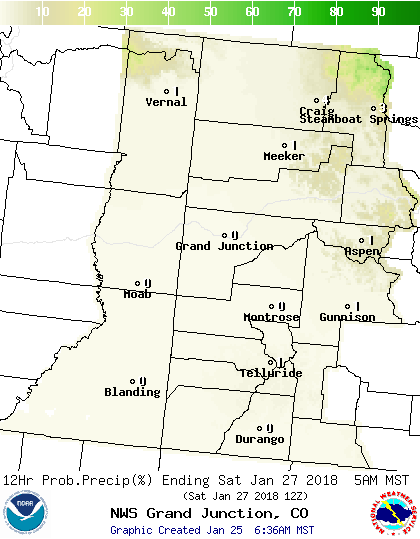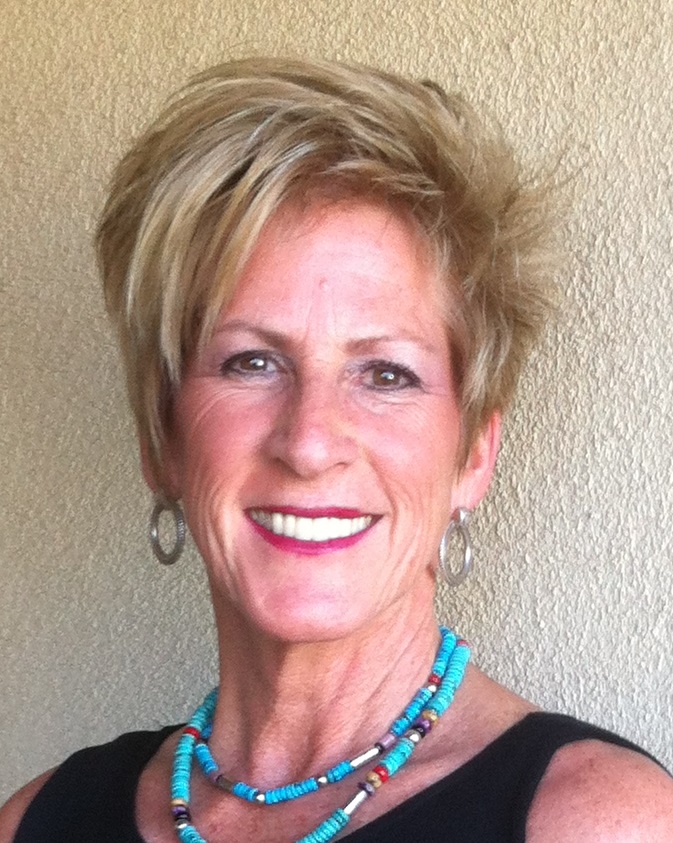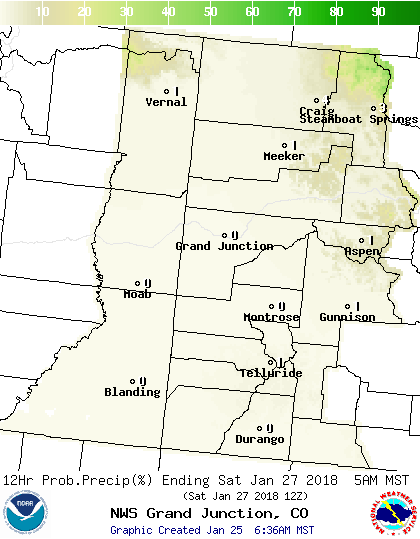By Elaine Chick, Water Information Program Manager
 Winter is off to a dry start across the West, and the possibility of ongoing drought in many Southwest locations. Some say it could be the effects of La Niña—a periodic cooling of Pacific Ocean waters near the equator that often brings drought mostly in the Southwest and Texas.
Winter is off to a dry start across the West, and the possibility of ongoing drought in many Southwest locations. Some say it could be the effects of La Niña—a periodic cooling of Pacific Ocean waters near the equator that often brings drought mostly in the Southwest and Texas.
Although it is still early in the winter season, and with luck, we may still see a variety of storms coming our way, there is concern how this will affect our watersheds and water supply for the year ahead.
The Water Information Program (WIP) spoke with a few experts to get their views on how the unusually high temperatures and dry weather will affect us here in the Southwest.
“We are experiencing 35 percent less than average water flowing in the rivers over the last 30 days,” commented Kevin Murphy from the U.S. Geological Survey. “This is significantly lower than historical averages. When we have really low flows it makes our job more critical because we provide the most accurate data to the water managers for their planning. Because shortages occur they need to make crucial decisions on how it affects water distribution,” Murphy said.
How will this affect reservoir operations and forecasting for the next year? WIP spoke with Susan Behery with the U.S. Bureau of Reclamation. “Right now, most of the forecasts for the area are below 50 percent of average. The good news is because we had a pretty good year last year, average or slightly above average, most of the reservoirs have enough carryover storage that we should not see a shortage if the current forecast doesn’t drop anymore,” stated Behery. “So far, the Colorado Basin River Forecast Center is likening this year to some of our big drought years like in 1977 and 2002. Hopefully, it won’t be that low but we are preparing for that.”
“Right at the moment, it does not look very good. Luckily most of our reservoirs in this area went into the winter above average. So that’s the good part. I’m one of those who won’t give up on it until the end of March,” said Gary Kennedy, superintendent at Mancos Water Conservancy District. “What we’ve noticed is our river water that runs into the summer is what’s being hurt. Typically, our snow gives us the ice which lets the rivers run longer until the summer from snowpack. Based on this winter so far it doesn’t look good for river run in the summer. Any snow that happens now will help and end up in the reservoirs or may end up with early river calls, which shuts down reservoir storage,” added Kennedy.
Jeff Derry from the Center for Snow and Avalanche Studies (snowstudies.org) had this to add. “The Colorado River Basin Forecast Center indicated that the ridge we are stuck on could last for a little while longer,” said Derry. “The much welcome storm that passed through Colorado Wednesday and Thursday (Jan 10-11) brought 20″ of new snow accumulation with 1.5″ water content. Over the last week [Senator Beck Basin] SBB has received precipitation every day, totaling 2.6″ of water. Having just received Storm #3, about 10 days after receiving Storm #2, it is finally starting to feel like winter. Storm #3 was another nice shot of precipitation over a 42-hour period. We are still very much behind in our snowpack totals but it is nice to see a significant event.”
Click here for recent storm report
The forecast is encouraging with another chance of precipitation Thursday night into Friday, looking to favor the Central and Northern Mountains with accumulation estimates right now around 6″.
As it is still pretty early in the season things could change very quickly around this area. The San Juan basin has a history of getting 50 percent of its snowpack from 10 percent of the storms. Let’s hope there is a possibility we could get a few storms and be back at average!
Let it snow, let it snow, let it snow!
The Water Information Program (WIP) provides balanced educational programming and resources to the people of the San Juan and Dolores watersheds. More than 20 partner organizations in southwestern Colorado—from water districts, utilities, private stakeholders and environmental advocates—make WIP possible. Programs include The Children’s Water Festival (over 650 fifth graders attend); Forests to Faucets, training 15-20 teachers in the Dolores/San Juan River Basin about the importance and interconnection of healthy watersheds to area water supplies through a two-day field-based course; Water 101 and 201, a continuing education course focusing on all aspects of water law and water agencies in Colorado, as well as many other resources for the public.
For more information about the Water Information Program and to receive the monthly newsletter go to the WIP website at www.waterinfo.org. Scroll down on the left side and sign-up!
 With over 20 years of demonstrated achievements as a project manager, overseeing world-class meetings and events in both for-profit and non-profit organizations, Elaine has had an amazing career working with international clients in helping them achieve their goals and business strategies with a strong belief of focusing on core values.
With over 20 years of demonstrated achievements as a project manager, overseeing world-class meetings and events in both for-profit and non-profit organizations, Elaine has had an amazing career working with international clients in helping them achieve their goals and business strategies with a strong belief of focusing on core values.
Elaine moved to the Durango area from the Pacific Northwest about five years ago. As an avid horsewoman, the Southwest gives Elaine the opportunity to live her dream lifestyle. “My desire is to create a change and to put my experience, knowledge and integrity where I can help make a difference, inspire individuals and help make a positive and lasting impact in our communities,” Elaine says. “My passion for the Southwest and its natural resources have led me to put my efforts towards work that helps create sustainability, education, and making a difference in my community and environment. As the Program Manager for the Water Information Program, I get to do just that!”


 Print
Print
Reblogged this on Coyote Gulch.